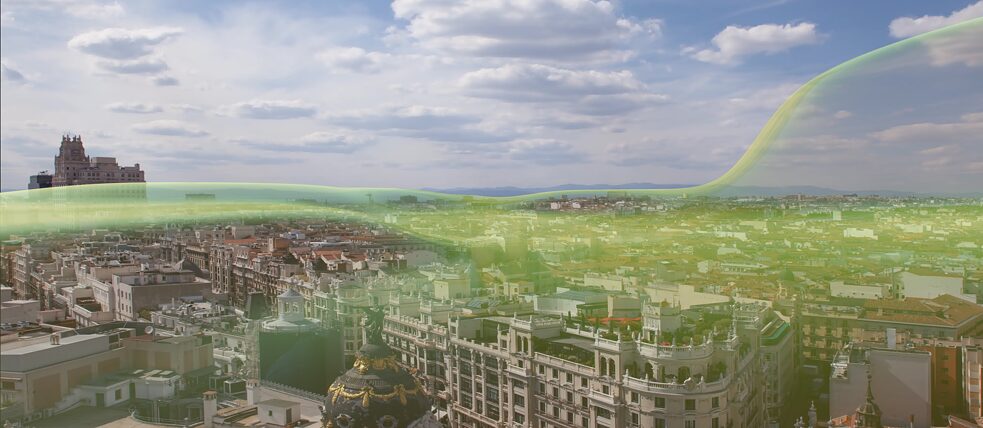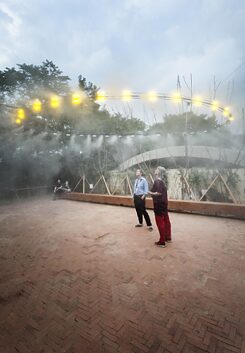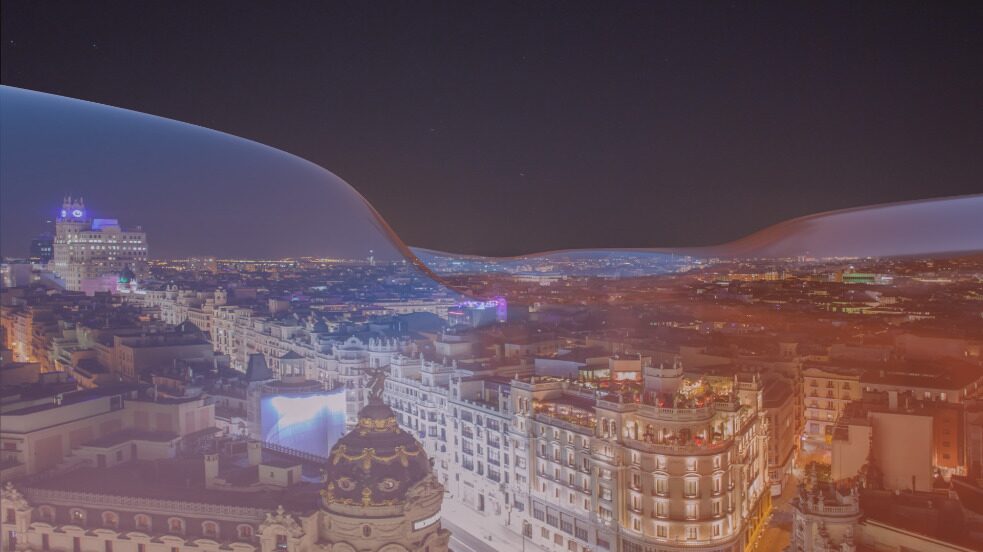Artist Talk
Nerea Calvillo in conversation with Nick Shapiro

The visualization of data, the exploration of environments through sensory immersion, and the many different ways in which knowledge can be relayed were some of the themes explored on the second day of New Nature. In a public Artist Talk, architect Nerea Calvillo was interviewed by environmental researcher Nick Shapiro, followed by a Q&A with the audience.
By Janna Frenzel
Nerea Calvillo presented her work on air, in which she explores how we come to understand the materiality of
 Yellow Dust (installation)
| © In The Air/C+arquitectas, images Daniel Ruiz
air and pollution. By using data visualizations and installations in public space, she attempts to break through the perceived invisibility of air and re-connect people to this most basic element. Motivated by the question of why spatial designers do not usually consider air as integral to urban space, she started looking into how we experience air pollution and how it impacts how we navigate and inhabit cities.
Yellow Dust (installation)
| © In The Air/C+arquitectas, images Daniel Ruiz
air and pollution. By using data visualizations and installations in public space, she attempts to break through the perceived invisibility of air and re-connect people to this most basic element. Motivated by the question of why spatial designers do not usually consider air as integral to urban space, she started looking into how we experience air pollution and how it impacts how we navigate and inhabit cities.
Making particulate matter and toxic gases visible
Calvillo pointed out that the relationship between data visualization and knowledge transfer is a complex one. Challenging the widespread notion that environmental awareness and change can only happen by harnessing the “best” data, she advocated for a careful, context-based balance of data-based communication and other ways of making data meaningful, such as through storytelling.While initially working on pollution because it was the only available data related to air, Nerea Calvillo has since expanded her project by exploring the relationship between air toxicants and pollen. Unlike human-made toxicants, pollen is intimately entangled to biodiversity, and has only since very recently been considered a pollutant. When pollen become viewed as invasive and harmful, it reinforced the increasingly rigid, Western-colonialist separation between humans and nature. It cast (urban) human habitats—houses equipped with air filters—as the safe “inside” and nature as the dangerous “outside”.
 Madrid In The Air 24h are stills of a video for Ecovisionaries at the Royal Academy
| © Nerea Calvillo/In The Air
Madrid In The Air 24h are stills of a video for Ecovisionaries at the Royal Academy
| © Nerea Calvillo/In The Air
Alternative futures at risk of cooptation
In the Q&A, Nerea Calvillo and Nick Shapiro discussed the tensions between prototyping and full-fledged solutions to problems related to environmental pollution. While seeing prototypes, explorations and experiments as vehicles to test alternative futures, both Calvillo and Shapiro raised concerns about the omnipresent risks of neoliberal cooptation. As evident in many so-called “Smart Cities”, new data-based infrastructure such as networks of environmental sensors are not presented as prototypes but rolled out as alleged solutions to urban problems without meaningful consultation or consent of residents. Instead, they can serve commercial purposes or surveillance. Somehow sceptical of the enthusiasm around sensing technologies and its implied potential for the democratisation of science, Calvillo encouraged a deployment of sensing devices that considers the intention of monitoring and asks what happens if we only use data to access environments or issues such as toxicity.You can learn more about Nerea Calvillo’s project “Into the air” here.
Comments
Comment